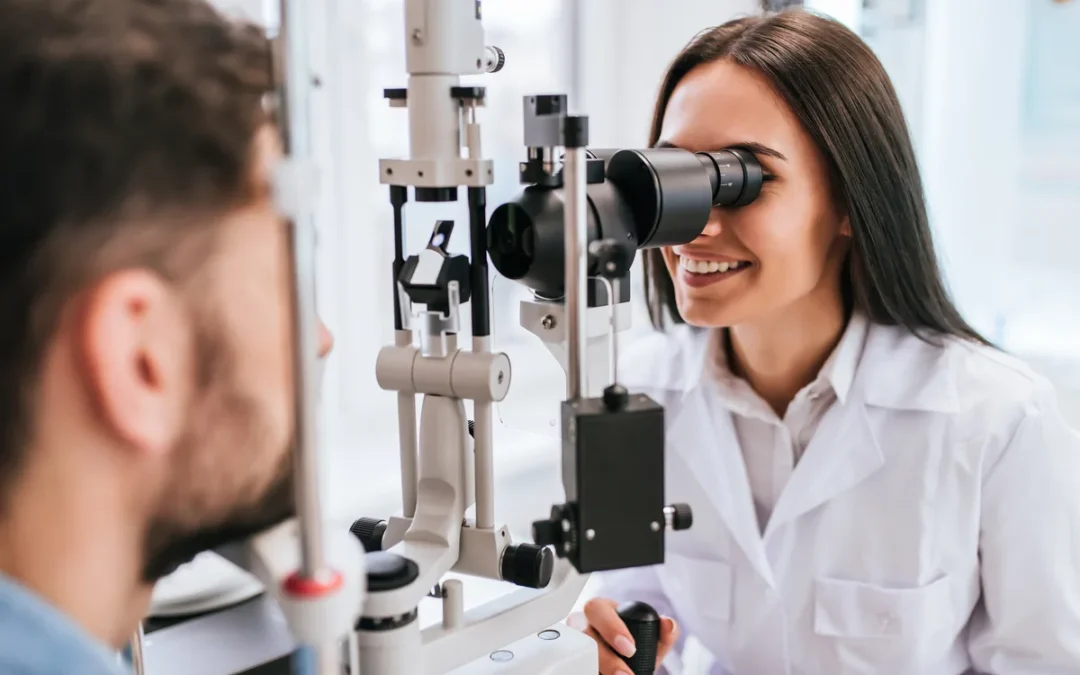
by super | Aug 15, 2025 | Medical Industry, Medical Tourism Hospitals India, Treatment & Hospitality, علاج هند, مدونات الأخبار
Visiting a foreign country for the first time — especially for medical treatment — is never an easy task. There are countless uncertainties, and navigating a new environment without prior experience can be overwhelming. Patients face multiple challenges, such as estimating the total funds required for treatment, struggling to obtain a Visa Invitation Letter (VIL) and making travel arrangements, finding the right doctor and hospital, and dealing with language barriers when communicating with locals.
This is where a trusted medical tourism company like Gulf Corner Medical Tourism Bangalore steps in. We handle all the necessary arrangements and ensure that patients are in the right hands throughout their stay. Based in Bangalore, India, Gulf Corner Medical Tourism is run by a skilled, dedicated team of experienced healthcare facilitators available 24/7 to assist both local and international patients seeking treatment in India. We follow a comprehensive, step-by-step process to cater to every patient’s needs with care and precision.
During their entire treatment and stay in India, our patients are treated as esteemed guests. We provide not only logistical support but also emotional and moral assistance to help them feel at home and reduce any feelings of isolation in a foreign land.
Our services include coordinating complimentary airport pick-up and drop-off, arranging all travel plans, and helping patients find the most suitable accommodation — whether hotels, serviced apartments, or guesthouses. These are equipped with essential amenities such as a fully functional kitchen, laundry facilities, Wi-Fi, and more. We also ensure that accommodations are conveniently located near restaurants, supermarkets, pharmacies, diagnostic centers, and currency exchange services.
Best of all, our services are 100% free of cost for patients, with absolutely no hidden charges. At Gulf Corner Medical Tourism Bangalore, our mission is to make your medical journey in India stress-free, affordable, and successful.

by super | Aug 15, 2025 | Medical Industry, Qualified Doctors, Treatment & Hospitality, علاج هند, مدونات الأخبار
At Gulf Corner Medical Tourism Bangalore, we understand that traveling to another country for medical treatment can feel overwhelming. That’s why we’ve compiled answers to the most common questions patients from the Gulf and other countries ask before choosing India for their healthcare needs.
1. Is Visiting India for Treatment the Right Decision?
Absolutely. Over the past decade, India has become one of the world’s most trusted medical tourism destinations. The country boasts some of the most qualified doctors in the world, many trained in leading hospitals across the USA, UK, and the Middle East. Our hospitals are equipped with cutting-edge technology and modern infrastructure, ensuring that patients receive world-class care at a fraction of the cost. In fact, patients often save 70–80% on treatment expenses compared to Western countries, without compromising on quality.
2. How Will Gulf Corner Medical Tourism Bangalore Help Me?
We specialize in complete medical travel assistance from the moment you contact us until you are fully recovered. Our services include:
-
Free cost estimates from multiple top hospitals.
-
Visa Invitation Letters (VIL) to help secure your medical visa quickly.
-
Full travel arrangements, including flights and airport pickup.
-
Comfortable accommodation options to suit your budget.
-
Arabic translators to assist you during hospital visits.
-
Doctor’s appointments and priority scheduling for faster treatment.
We ensure a smooth, stress-free experience so you can focus entirely on your health and recovery.
3. Why Should I Choose Gulf Corner Medical Tourism Bangalore?
Our reputation is built on trust, ethics, and patient-first service. With years of experience in medical tourism, we understand the exact needs of patients and their families when they arrive in India. We treat every patient like family, offering guidance, emotional support, and full transparency at every stage. Our integrity policy ensures there are no hidden costs or unethical practices—only honest, reliable assistance.
4. What’s the First Step in My Healthcare Journey to India?
The process is simple and straightforward:
-
Contact us with your medical reports via our online form or WhatsApp.
-
We provide a free treatment cost estimate based on your reports.
-
We issue a Visa Invitation Letter to support your visa application.
-
Upon your arrival in India, we connect you directly with the right doctors and hospitals.
-
Our team supports you throughout your treatment until full recovery.
5. Are Your Services Free?
Yes — 100% free of cost for patients. We do not charge any fees for our coordination, consultation, or guidance services. Our goal is to make healthcare in India accessible, affordable, and stress-free for everyone.
6. From Which Countries Do Medical Tourists Visit India and for What Treatments?
We welcome patients from across the Gulf region including Iraq, Oman, Saudi Arabia, and the UAE, as well as from Bangladesh, Africa, Malaysia, Russia, and more. The most sought-after treatments include:
-
Liver and Kidney Treatments (including transplants)
-
Cancer Care
-
IVF and Fertility Solutions
-
Cardiac Surgeries
-
Orthopedic and Joint Replacements
If you’re considering treatment in Bangalore, India, Gulf Corner Medical Tourism Bangalore is here to guide you every step of the way — from your first inquiry to your safe journey home.

by super | Aug 15, 2025 | Medical Industry, Medical Tourism Hospitals India, علاج هند, مدونات الأخبار
Gulf Corner Medical Tourism Bangalore
Beyond medical arrangements, we focus on patient comfort and recovery. This includes arranging Halal food, family-friendly hotels, and leisure tours to destinations like Kerala, Mysore, and Coorg. Many patients also enjoy visiting شارع العرب في بنجلور, a vibrant area filled with Arabic restaurants, shops, and familiar cultural experiences, making Bangalore feel like a home away from home.
With a proven track record of serving hundreds of satisfied patients from across the Arab world, Gulf Corner Medical Tourism Bangalore has become a trusted bridge between the Gulf and India’s healthcare excellence. We believe in combining affordable medical treatment with cultural understanding, ensuring that each patient’s journey is not only medically successful but also emotionally reassuring.
1. Hassle-Free Start to Your Medical Trip
Planning medical travel can feel overwhelming — but Gulf Corner Medical Tourism Bangalore makes it simple. From your first message, we guide you step-by-step, starting with a free consultation and cost estimate so you can make an informed decision.
2. Step 1: Consultation and Diagnosis
We connect you directly with India’s most experienced specialists for online consultations, giving you expert advice before you even leave home. This ensures you’re traveling with a clear plan in mind.
3. Step 2: Complete Travel Support
Once you decide to proceed, we provide visa assistance, flight guidance, airport pickup, and hotel booking. All accommodations are chosen with Arab patients in mind, offering Halal food and family-friendly spaces.
4. Step 3: Hospital and Treatment Coordination
We arrange priority appointments, pre-booked hospital rooms, and Arabic-speaking interpreters for smooth communication between patients and doctors. Our team remains with you throughout the treatment, ensuring your comfort and safety.
5. Step 4: Post-Treatment Care and Tourism
After treatment, we arrange follow-up consultations, rehabilitation if required, and local tours to Kerala, Mysore, and Coorg for a refreshing recovery experience. This blend of healthcare and tourism makes Bangalore a truly unique medical destination for العلاج في الهند.

by super | Aug 15, 2025 | Health & Wellness, Medical Industry, Qualified Doctors, Treatment & Hospitality, علاج هند, مدونات الأخبار
Bangalore, India, is a leading medical tourism destination for patients from Gulf countries such as Saudi Arabia, UAE, Qatar, Oman, Kuwait, and Bahrain. Known for its world-class hospitals, highly experienced doctors, and advanced medical technology, the city offers top-quality treatments at a fraction of the cost compared to the Gulf, Europe, or the US. At Gulf Corner Medical Tourism Bangalore, coordinated by Abu Khalid, patients receive complete assistance including airport pickup, hospital admission, Arabic translation, halal food, and family-friendly accommodation. The city is home to top hospitals like Narayana Health, Manipal Hospitals, Fortis Hospital, Aster CMI, Sakra World Hospital, and Apollo Hospitals, covering a wide range of specialties such as cardiology, orthopedics, dental care, eye surgery, aesthetic gynecology, pediatrics, sexology, hair transplant, and traditional Indian therapies.
Treatments available include ESMR for heart disease, advanced cardiac surgeries, joint replacements, cosmetic gynecology, pediatric care, dental implants, laser eye surgeries, hair restoration, and male & female sexual health treatments — all delivered at international standards but with costs up to 70% lower than in Gulf countries. For example, heart bypass surgery can cost just $4,000–$7,000 in Bangalore compared to $20,000+ abroad, while knee replacement is $3,000–$5,000 with world-class implants. With Arabic-speaking coordinators, trusted medical experts, and cultural comfort, Bangalore has become the preferred choice for thousands of Arab patients seeking العلاج في الهند and بنجلور الهند علاج.
At Gulf Corner Medical Tourism Bangalore, the focus is on making every patient’s journey to India smooth, safe, and successful. From the first inquiry, our dedicated team — led by Abu Khalid — provides step-by-step guidance, including medical record review, doctor consultations, visa assistance, and travel planning. We understand the needs of patients from Gulf countries and ensure Arabic-speaking coordinators are available at every stage, making communication with doctors and hospital staff easy and stress-free. Our partnerships with India’s top hospitals allow us to arrange priority appointments, specialist availability, and tailor-made treatment packages designed for affordability without compromising quality.
Beyond treatment, Gulf Corner Medical Tourism ensures patient comfort with Halal-certified meals, private and family accommodations near hospitals, and leisure options for recovery. Many patients choose to extend their stay to explore India’s famous destinations such as Kerala (السياحة في كيرلا), Mysore, or Coorg, turning their medical trip into a relaxing and memorable experience. With a proven track record of satisfied patients from Saudi Arabia, UAE, Oman, Kuwait, Qatar, and Bahrain, Gulf Corner Medical Tourism has built a reputation as a trusted bridge between world-class Indian healthcare and the comfort and culture of the Arab world.
السياحة العلاجية في بنجلور – علاج عالي الجودة وبأسعار مناسبة للمرضى العرب
تُعد مدينة بنجلور في الهند من أبرز وجهات السياحة العلاجية للمرضى القادمين من دول الخليج مثل السعودية، الإمارات، قطر، عمان، الكويت، والبحرين. تشتهر المدينة بوجود مستشفيات عالمية المستوى، أطباء ذوي خبرة عالية، وتقنيات طبية متقدمة، وتقدم رعاية طبية عالية الجودة بتكلفة أقل بكثير مقارنةً بدول الخليج أو أوروبا أو الولايات المتحدة. في Gulf Corner Medical Tourism Bangalore بإشراف أبو خالد، يحصل المرضى على خدمات متكاملة تشمل الاستقبال من المطار، الحجز في المستشفى، الترجمة الفورية إلى العربية، الطعام الحلال، وإقامة مريحة تناسب العائلات. تضم بنجلور أفضل المستشفيات مثل Narayana Health، Manipal Hospitals، Fortis Hospital، Aster CMI، Sakra World Hospital، وApollo Hospitals، وتغطي مجموعة واسعة من التخصصات مثل أمراض القلب، جراحة العظام، طب الأسنان، جراحة العيون، التجميل النسائي، طب الأطفال، علم الجنس، زراعة الشعر، والعلاجات الهندية التقليدية.
تشمل العلاجات المتوفرة علاج الصدمات الموجية للقلب (ESMR)، جراحات القلب المتقدمة، استبدال المفاصل، التجميل النسائي، رعاية الأطفال، زراعة الأسنان، جراحات العيون بالليزر، زراعة الشعر، وعلاجات الصحة الجنسية للرجال والنساء — وجميعها تُقدَّم وفق معايير عالمية مع تكلفة أقل بنسبة تصل إلى 70% مقارنة بدول الخليج. على سبيل المثال، يمكن إجراء جراحة القلب المفتوح في بنجلور بتكلفة تتراوح بين 4000 و7000 دولار فقط، بينما تكلفة استبدال الركبة بين 3000 و5000 دولار باستخدام أفضل أنواع المفاصل الصناعية. بفضل وجود منسقين ناطقين بالعربية، وأطباء موثوقين، وراحة ثقافية، أصبحت بنجلور الخيار الأول لآلاف المرضى العرب الباحثين عن العلاج في الهند و بنجلور الهند علاج.
في Gulf Corner Medical Tourism Bangalore، نركز على جعل رحلة المريض إلى الهند سلسة وآمنة وناجحة. منذ لحظة التواصل الأولى، يقدم فريقنا المتخصص — بقيادة أبو خالد — إرشادًا خطوة بخطوة، بدءًا من مراجعة التقارير الطبية، وتنسيق الاستشارات مع الأطباء، والمساعدة في الحصول على التأشيرات، وحتى تنظيم السفر. نحن ندرك تمامًا احتياجات المرضى من دول الخليج، ونوفر مترجمين فوريين باللغة العربية لضمان تواصل سهل مع الأطباء وفريق المستشفى. كما تتيح شراكاتنا مع أفضل المستشفيات في الهند حجز مواعيد عاجلة، وضمان توفر الأطباء المتخصصين، وتصميم باقات علاجية مخصصة بأسعار مناسبة ودون أي تنازل عن الجودة.
ولا يقتصر دور Gulf Corner Medical Tourism على العلاج فقط، بل نهتم أيضًا براحة المريض من خلال توفير وجبات حلال معتمدة، إقامة خاصة أو عائلية قريبة من المستشفى، وخيارات ترفيهية تساعد على التعافي. يختار العديد من المرضى تمديد إقامتهم لزيارة وجهات سياحية مشهورة في الهند مثل كيرلا (السياحة في كيرلا)، ميسور، أو كوداجو، مما يحوّل رحلتهم العلاجية إلى تجربة مميزة وممتعة. وبفضل سجل حافل من المرضى الراضين من السعودية، الإمارات، عمان، الكويت، قطر، والبحرين، أصبحت Gulf Corner Medical Tourism جسرًا موثوقًا يربط بين الرعاية الصحية العالمية في الهند والراحة والثقافة العربية.

by super | Aug 14, 2025 | Medical Industry, Medical Tourism Hospitals India, Treatment & Hospitality, علاج هند, مدونات الأخبار
Bangalore, India, is recognized as one of the best destinations for world-class eye treatments for Gulf and Arab patients. The city offers advanced ophthalmology hospitals equipped with the latest laser technology, experienced eye surgeons, and comprehensive care for a wide range of vision problems. For those searching for أفضل مستشفى للعيون في بنجلور, Bangalore provides international-quality eye care at affordable costs, making it a preferred choice for medical travelers from the Middle East.
With Gulf Corner Medical Tourism, coordinated by Abu Khalid, patients from Saudi Arabia, UAE, Qatar, Kuwait, Oman, and Bahrain receive complete treatment support. This includes hospital selection, appointment booking, Arabic translation, visa guidance, travel planning, and accommodation near شارع العرب في بنجلور. The process ensures stress-free, efficient, and comfortable treatment experiences.
Why Choose Bangalore for Eye Treatment?
Eye hospitals in Bangalore specialize in treatments such as LASIK, cataract surgery, corneal transplants, glaucoma management, diabetic retinopathy treatment, and pediatric ophthalmology. For Arab patients looking for العلاج في الهند للعيون or بنجلور الهند علاج العيون, the city provides cutting-edge treatments with short waiting times and highly skilled surgeons.
In addition to medical care, Bangalore offers opportunities for السياحة في بنجلور المسافرون العرب and nearby السياحة في كيرلا للعوائل, allowing patients to combine treatment with relaxation and sightseeing.
Top Eye Treatments Available
-
Cataract Surgery – Advanced phacoemulsification and lens implants
-
LASIK & Refractive Surgery – Correcting vision for clear eyesight
-
Glaucoma Management – Early detection and pressure control treatments
-
Retina Treatments – Managing diabetic eye diseases and retinal detachment
-
Corneal Transplant – Restoring vision in damaged corneas
Arabic-Focused Eye Care Support
Abu Khalid and the Gulf Corner Medical Tourism team ensure every Arab patient has full Arabic-language assistance from arrival to follow-up care. Whether you are searching for أفضل طبيب عيون في بنجلور or أفضل مستشفى لعلاج العيون في الهند, you will have complete guidance and trusted recommendations for the best specialists in the field.
أفضل مستشفى للعيون في بنجلور, أفضل طبيب عيون في بنجلور, العلاج في الهند للعيون, شارع العرب في بنجلور, بنجلور الهند علاج العيون, أفضل مدينة للعلاج في الهند, السياحة في الهند المسافرون العرب, gulf corner medical tourism, علاج العيون في الهند, السياحة في بنجلور المسافرون العرب, medical tourism companies in bangalore, السياحة في كيرلا المسافرون العرب

by super | Aug 14, 2025 | Medical Industry, Medical Tourism Hospitals India, علاج هند, مدونات الأخبار
Bangalore, India, has become one of the top destinations for world-class neurology treatments for Gulf and Arab patients. The city is home to advanced neurology hospitals equipped with modern diagnostic facilities, internationally trained neurologists, and specialized treatment programs for complex brain and nerve conditions. For those searching for أفضل مستشفى للأعصاب في بنغالور, Bangalore offers a combination of expert care, affordable prices, and comfortable patient services.
With Gulf Corner Medical Tourism, coordinated by Abu Khalid, patients from Saudi Arabia, UAE, Qatar, Kuwait, Oman, and Bahrain can access comprehensive neurology treatment packages. These include hospital coordination, Arabic translation, visa assistance, travel arrangements, and accommodation near شارع العرب في بنجلور, making treatment stress-free and well-organized.
Why Choose Bangalore for Neurology Treatment?
Neurology hospitals in Bangalore specialize in both surgical and non-surgical treatments for conditions like stroke, epilepsy, Parkinson’s disease, multiple sclerosis, neuropathies, and spinal disorders. For Arab patients searching for العلاج في الهند للأعصاب or بنجلور الهند علاج الأعصاب, the city provides international-quality healthcare at costs much lower than in the Gulf region.
Bangalore also offers opportunities for السياحة في بنجلور المسافرون العرب and even nearby السياحة في كيرلا للعوائل, ensuring patients and their families have a comfortable and memorable stay.
Top Neurology Treatments Available
-
Stroke Management & Rehabilitation – Quick-response care and recovery programs
-
Epilepsy Treatment – Advanced medical therapy and surgery options
-
Parkinson’s & Movement Disorders – Deep Brain Stimulation (DBS) and rehabilitation
-
Spinal Cord Disorders – Non-surgical and surgical treatments
-
Neuro-Oncology – Brain tumor diagnosis and treatment
Arabic-Focused Neurology Tourism Support
Abu Khalid and the Gulf Corner Medical Tourism team ensure every Arab patient receives full Arabic-language assistance from the moment they arrive in Bangalore. Whether it’s أفضل طبيب أعصاب في بنجلور or أفضل مستشفى لعلاج الأعصاب في الهند, you will have complete guidance through consultation, treatment, and follow-up care.
أفضل مستشفى للأعصاب في بنجلور, أفضل طبيب أعصاب في بنجلور, العلاج في الهند للأعصاب, شارع العرب في بنجلور, بنجلور الهند علاج الأعصاب, أفضل مدينة للعلاج في الهند, السياحة في الهند المسافرون العرب, gulf corner medical tourism, علاج الأعصاب في الهند, السياحة في بنجلور المسافرون العرب, medical tourism companies in bangalore, العلاج في كيرلا المسافرون العرب






